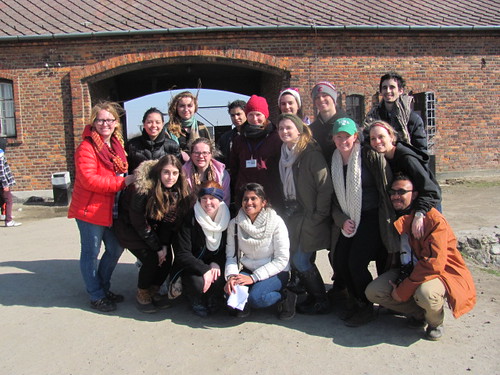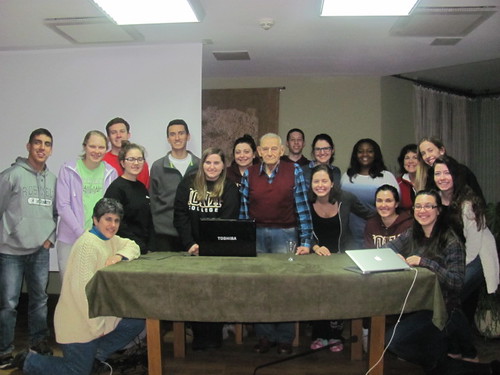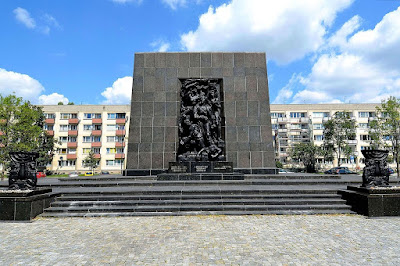Immediately after arriving in Poland, we were brought on a
walking tour of Oświęcim – the town we were staying in. Led by Sister Mary, we
traveled through time, fluctuating between three distinct periods: Oświęcim
before, during, and after the Shoah. Referred to as Oshpitzin by the Jewish
community, which means “guests” in Yiddish, Sister Marry informed us that this
town was viewed as a place for all Jews seeking asylum. Hearing this, and
knowing that Oświęcim also housed the largest Nazi concentration and extermination
camp (Auschwitz II – Birkenau), completely shocked me. For this area of refuge,
which once nourished and supported Jewish life, to do a complete 180 and become
the location of the murder factory responsible for devouring the lives of
hundreds of thousands of Jews, was unfathomable. However, as discouraging as
this realization was, as our tour continued it became increasingly more evident
that despite living in the shadow of the Holocaust, the town of Oświęcim
maintained a sense of resilience that no darkness could extinguish.
 |
| Only Surviving Jewish Cemetery in Oświęcim |
Our first stop on this tour was at a Jewish cemetery — the only
one left in the town. As we waited outside of its gate, Sister Mary briefed us
on the history of this cemetery. She explained to us that during the war, in an
effort to rid Oświęcim of Jewish influence, this sacred ground was demolished
by Nazis. Once we entered the cemetery, this became all too clear. Slightly
overgrown and with a sense of abandonment seeping through its walls, it was
obvious that this was a place that had seen much devastation. However, after
taking a few minutes to walk around its premises, a new story began to be told.
According to Sister Mary, once the war was over, efforts were made by the
community to restore the cemetery the best that they could. This could be seen
through the several memorials made by tombstones misplaced during the
destruction caused by the Nazis. Unable to place these stones with their proper
owner(s), they were refurbished in a way that allowed for them to recognize not
only who they once stood for, but for the larger community of souls lost during
the Shoah. Just before leaving the cemetery, Sister Mary and Dr. Procario-Foley
guided our attention to the grave of the last Jewish resident of Oświęcim. As
tragic as this news may have been, seeing the grave was incredibly powerful, as
it symbolized both the devastation of the Shoah and the resilience of the Jews.
Covered in stones (a Jewish tradition for remembering and honoring the
deceased), this grave may have marked the end of Oświęcim’s Jewish population,
but it also demonstrated that just because the Jews were no longer being
represented physically, their influence throughout the town remained.
 |
| Festival of Life Mural |
This idea was further exemplified at the next stop on our tour:
a mural dedicated to the Festival of Life. An annual celebration held in
Oświęcim, this gathering was designed as a means of demonstrating and
encouraging the further development of “peaceful relations
beyond cultural and state borders where there is no place for racism,
anti-Semitism, and other forms of xenophobia” (http://lifefestival.pl/en/about-festival). Held in the town home to the largest Nazi concentration and
extermination camp, this celebration of diversity indicates just how far Oświęcim has come since the Holocaust. In an effort to establish
the town as one of hope rather than despair, this festival encourages those who
attend to remember the unfathomable acts that took place within its borders by
showing them just how much the town has grown. Using the arts as a medium to
unite the variety of individuals it attracts, Oświęcim’s Life Festival combines
cultures from around the globe, educating each attendee on the history of the
Holocaust, and thus exemplifying the importance of tolerance – a mindset the once
Nazi controlled town lacked, but has since reacquired.
By: Kade Lamontagne































